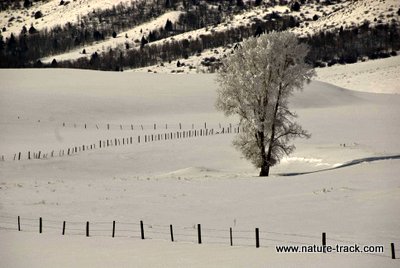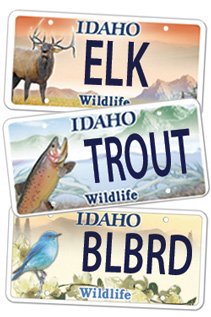Plants Harden to Survive Winter

Well before the snow, ice and cold get serious, plants are preparing for the upcoming freezing weather.
If I get fed up with shoveling snow and layering up for the cold, I can follow the birds to southern Arizona and enjoy some relief. Plants aren’t so lucky. Nothing is more tied to one location than a plant. Once that seed sprouts, the plant has cast all its dice into the game. It is a huge gamble and each plant lives or dies in that place. If roots can’t reach adequate water and nutrients, if there is too little or too much shade or if the place is just too dang cold, it will die.
It is this last one that is fascinating this time of year. How do plants keep from freezing when sub-zero temperatures reign for much of the winter? How do they survive cold in the winter when a lesser cold snap during the spring may kill them? They don’t produce their own heat like mammals and they can’t run or fly away from the cold so what do they do?
Although I will never be one to adore cold snowy weather, I do realize that over the course of winter I adapt to the cold. After a few weeks of single digits, 25-30 degrees can feel like a spring day, especially if the sun is shining. Plants essentially survive cold by getting used to it as well.
For plants, the process is usually referred to as cold hardening and it occurs at a cellular level. This is a process, triggered in part by the shorter days of autumn but even more directly by decreasing temperatures. A warm autumn can retard hardening but as temperatures slowly drop with the advance of winter, hardening will eventually begin.
This is a progression too, not a given moment in time. Hardening happens in stages, with the plant becoming increasingly more cold hardy after each stage. It may take weeks for a plant to completely harden.
Hardening can be reversed or increased depending on conditions. A few years ago, late February and early March temperatures were unseasonably warm. The west (sun facing) side of my apricot trees “woke up” and when temperatures suddenly plunged for several days in a row, the west-facing half of both trees died. Conversely, if an extreme cold front settles in during mid winter, plants have the ability to harden even further to combat the decreased temperatures.
The process of hardening is both simple and so complex that botanists have yet to document exactly how it works. It is conceptually simple to recognize that in order to avoid freezing, water must be removed from the plant cells. How that works, exactly, still hasn’t been completely worked out. Botanists know that the cell wall becomes much more permeable, allowing water molecules to escape the cell, but the exact chemical triggers haven’t been identified. Whether or not scientists can pinpoint the exact mechanism, nature’s solution has allowed life to thrive in colder climates.
While I wouldn’t mind a bit more ability to harden against the cold, I must be cautious about hardening in other ways. It is far too easy to miss the beauty of life through a hardening of my attitude.

Wildlife License Plates
Great news! as of 2024, there are three NEW designs for license plates. They still are bluebird, cutthroat trout and elk, but they are beautiful.
Idaho Wildlife license plates provide essential funding that benefits the great diversity of native plants and wildlife that are not hunted, fished or trapped—over 10,000 species or 98% of Idaho’s species diversity. Game species that share the same habitats (such as elk, deer, antelope, sage-grouse, salmon, trout) also benefit from these specialty plates.
No state tax dollars are provided for wildlife diversity, conservation education and recreation programs. Neither are any revenues from the sale of hunting or fishing licenses spent on nongame species. Instead, these species depend on direct donations, federal grants, fundraising initiatives—and the Idaho Wildlife license plates.
Both my vehicles have Bluebird Plates. I prefer the bluebird because the nongame program gets 70 percent of the money from bluebird plates, but only 60 percent of the money from elk and trout plates - 10 percent of the money from elk plates supports wildlife disease monitoring and testing programs (to benefit the livestock industry) and 10 percent from cutthroat plates supports non-motorized boat access.
Incidentally, in 2014, the Idaho Legislature denied the Department of Fish and Game the ability to add new plates or even to change the name of the elk and cutthroat plates (very specific) to wildlife and fish plates, a move that would have allowed for changing images occasionally and generating more revenue. It would seem that they believe that we Idahoans don't want a well funded wildlife program.
I think it is time we let the Legislature know that Idahoan support wildlife funding and that we would like to see these generic plates come to fruition.
Wildlife License Plates
Great news! as of 2024, there are three NEW designs for license plates. They still are bluebird, cutthroat trout and elk, but they are beautiful.
Idaho Wildlife license plates provide essential funding that benefits the great diversity of native plants and wildlife that are not hunted, fished or trapped—over 10,000 species or 98% of Idaho’s species diversity. Game species that share the same habitats (such as elk, deer, antelope, sage-grouse, salmon, trout) also benefit from these specialty plates.
No state tax dollars are provided for wildlife diversity, conservation education and recreation programs. Neither are any revenues from the sale of hunting or fishing licenses spent on nongame species. Instead, these species depend on direct donations, federal grants, fundraising initiatives—and the Idaho Wildlife license plates.
Both my vehicles have Bluebird Plates. I prefer the bluebird because the nongame program gets 70 percent of the money from bluebird plates, but only 60 percent of the money from elk and trout plates - 10 percent of the money from elk plates supports wildlife disease monitoring and testing programs (to benefit the livestock industry) and 10 percent from cutthroat plates supports non-motorized boat access.
Incidentally, in 2014, the Idaho Legislature denied the Department of Fish and Game the ability to add new plates or even to change the name of the elk and cutthroat plates (very specific) to wildlife and fish plates, a move that would have allowed for changing images occasionally and generating more revenue. It would seem that they believe that we Idahoans don't want a well funded wildlife program.
I think it is time we let the Legislature know that Idahoan support wildlife funding and that we would like to see these generic plates come to fruition.

"WOW. What a phenomenal piece you wrote. You are amazing." Jennifer Jackson
That is embarrassing, but actually a fairly typical response to my nature essays. Since The Best of Nature is created from the very best of 16 years of these nature essays published weekly in the Idaho Falls Post Register (online readership 70,000), it is a fine read. It covers a wide variety of topics including humorous glimpses of nature, philosophy, natural history, and conservation. Readers praise the style, breadth of subject matter and my ability to communicate complex and emotional topics in a relaxed and understandable manner.
Everyone can find something to love in this book. From teenagers to octogenarians, from the coffee shop to the school room, these nature essays are widely read and enjoyed.
Some of the essays here are my personal favorites, others seemed to strike a chord with readers. Most have an important message or lesson that will resonate with you. They are written with a goal to simultaneously entertain and educate about the wonderful workings of nature. Some will make you laugh out loud and others will bring a tear to the eye and warm your heart.
Readers Write:
"You hit a home run with your article on, Big Questions in Nature. It should be required reading for everyone who has lost touch with nature...great job!" Joe Chapman
"We enjoyed your column, Bloom Where Planted. Some of the best writing yet. The Post Register is fortunate to have your weekly columns." Lou Griffin.
To read more and to order a copy, click here or get the Kindle version
Copies are also available at:
Post Register
Island Park Builders Supply (upstairs)
Barnes and Noble in Idaho Falls
Harriman State Park, Island Park
Museum of Idaho
Valley Books, Jackson Wyoming
Avocet Corner Bookstore, Bear River National Wildlife Refuge, Brigham City, Utah
Craters of the Moon National Monument Bookstore, Arco, Idaho